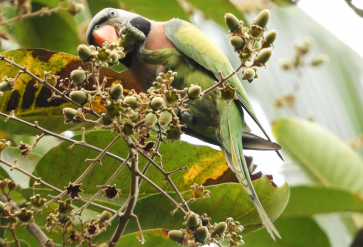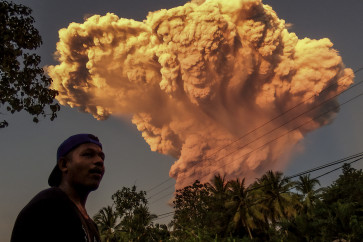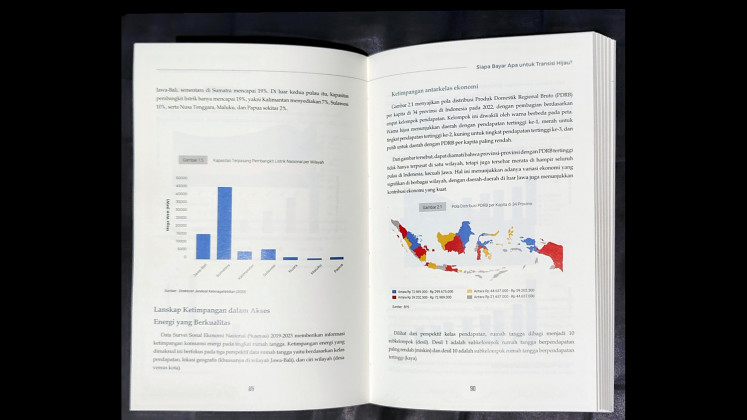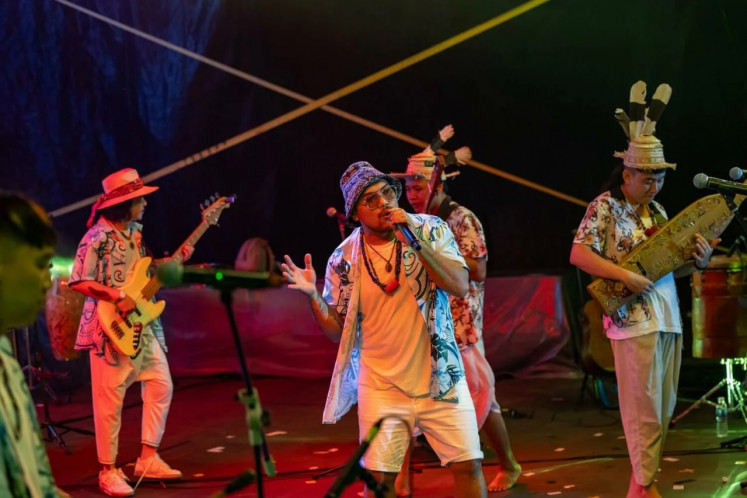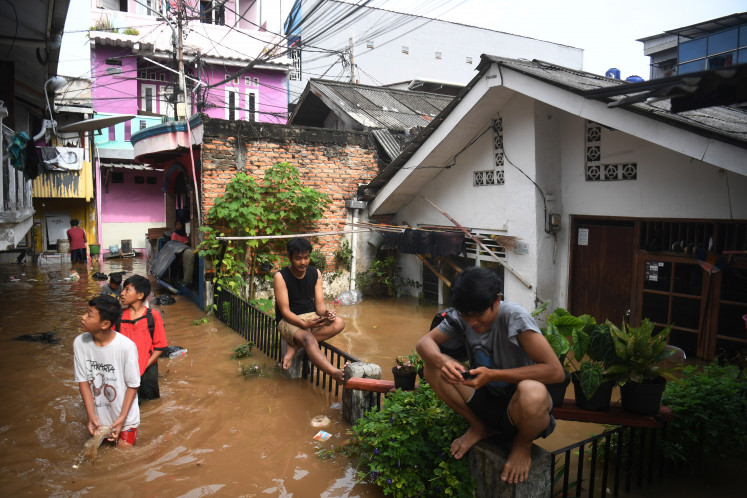Popular Reads
Top Results
Can't find what you're looking for?
View all search resultsPopular Reads
Top Results
Can't find what you're looking for?
View all search resultsIndonesian dermatologists to research cure for balding and acne problems
Five groups of dermatologists and scientists won the Hair and Skin Research Grant 2022 to embark on research to help patients with Androgenetic Alopecia and acne problems.
Change text size
Gift Premium Articles
to Anyone
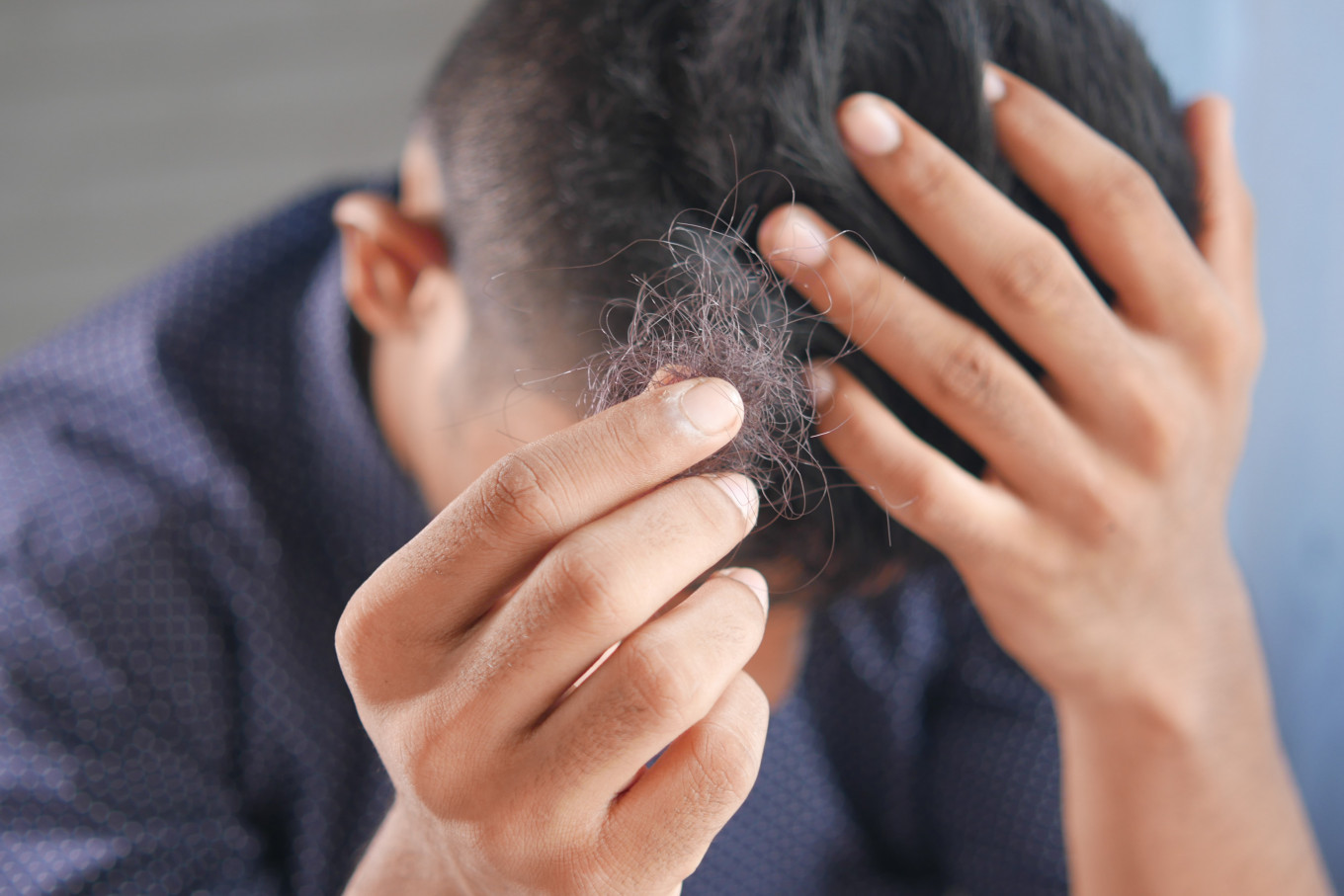 Hair problem: According to Farah Faulin Al Fauz Lubis, resident dermatovenereologist at RS Cipto Mangunkusumo, Jakarta, Androgenetic Alopecia 'is among the most common causes of baldness among men, but most don’t seek medical help.' (Unsplash/Towfiqu Barbhuiya) (Unsplash/Towfiqu Barbhuiya)
Hair problem: According to Farah Faulin Al Fauz Lubis, resident dermatovenereologist at RS Cipto Mangunkusumo, Jakarta, Androgenetic Alopecia 'is among the most common causes of baldness among men, but most don’t seek medical help.' (Unsplash/Towfiqu Barbhuiya) (Unsplash/Towfiqu Barbhuiya)
F
ive groups of dermatologists and scientists won the Hair and Skin Research Grant 2022 to embark on research to help patients with Androgenetic Alopecia and acne problems.
At 25 years old, Iwan (not his real name) noticed that he had started losing hair.
“It began from both my temples,” Iwan told The Jakarta Post on Oct. 4. “My hair started thinning and my hairline also receded.”
After a couple of years, Iwan also started to lose hair from the crown of his head.
Now, at 47, the sound engineer looks almost bald with a few thin strands of hair along the sides of his head.
“Maybe, that’s just the way it should be,” he said, with resignation and acceptance. “My father also experienced the same thing and went almost bald before he was 50.”
Based on the pattern of his baldness and family history, Iwan has Androgenetic Alopecia (AGA).
“[AGA] is among the most common causes of baldness among men,” Farah Faulin Al Fauz Lubis, resident dermatovenereologist at RS Cipto Mangunkusumo, Jakarta, said. “But most of them don’t seek medical help and just let things be. As the condition runs in the family, many of them believe that it’s inevitable.”
But actually, these men can alleviate their condition with regular treatment.
Dermatologists in the United States usually prescribe patients with a topical solution that contains Minoxidil, which stimulates hair growth, and tablets that contain Finasteride, which decreases the androgen hormone that causes men to lose hair.
“In Indonesia, the Food and Monitoring Agency [BPOM] doesn’t authorize the use of Finasteride oral as it has a side effect of lowering men’s libido,” Farah continued.
But a number of medical studies in Europe have shown that topical Finasteride has the same efficacy in combatting male baldness as the oral medicine, without the unwanted side effects. Therefore, Farah and her colleague, dermatologist Lili Legiawati, have decided to test a combination of topical Finasteride and Minoxidil to treat male patients with AGA.
“For the research, we’ll engage approximately 30 consenting Indonesian male patients in Jakarta as subjects,” Farah said.
These men will be given a topical solution that contains 0.1 percent Finasteride and 5 percent Minoxidil that they have to apply daily on their balding scalps.
“They will have to visit us once a month so that we can observe their progress,” Farah said. “If all goes well, we should see new hair growth after three months.”
Farah and Lili’s research topic is among the five that won the Hair and Skin Research Grant 2022, a philanthropic program by L’Oréal Indonesia in collaboration with the Indonesian Association of Dermatology and Venereology (Perdoski) and the University of Indonesia (UI).
The program first started in Indonesia in 2021. This year, the committee received a total of 29 research proposals.
The five winners have been chosen based on their research’s value and significance, scientific quality, originality and feasibility.
“The topics of their research are urgent and very interesting,” dermatologist M. Yulianto Listiawan, chairman of Perdoski, said when announcing the winners in Raffles Hotel, Jakarta, on Sept. 20.
According to Yulianto, Perdoski has conducted surveys at many community health centers (Puskesmas) in Indonesia and discovered that hair and skin problems “always sit on the top three [issues]”.
“Therefore, it’s necessary for Indonesian dermatologists to do more research and studies,” Yulianto said. “With more research, we’ll understand Indonesian hair and skin better and can help prevent hair and skin diseases as early as possible.”
The winners received a total research grant of Rp 375 million (US$2,400). They will conduct their research within one year and publish the results in international medical journals.
“[By publishing the results in international medical journals], the world will recognize the capability of Indonesian dermatologists in researching and understanding hair and skin problems in the country,” Yulianto said.
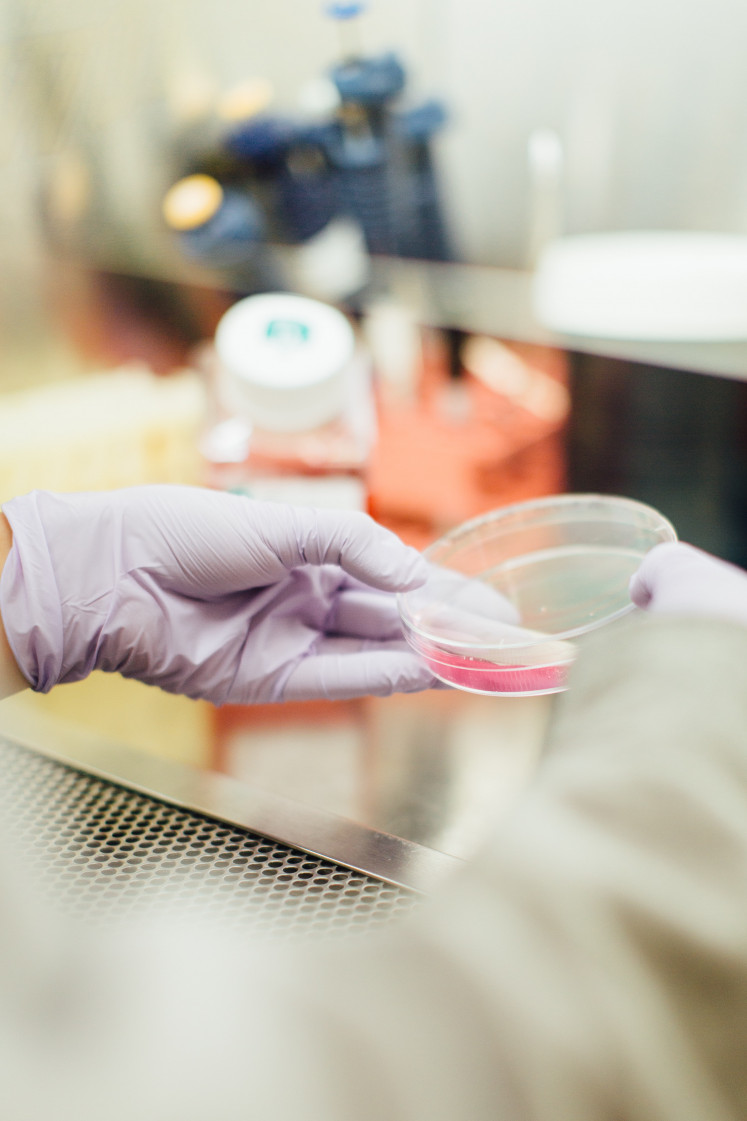
Mapping skin types
The Post interviewed four other winning teams of the Hair and Skin Research Grant 2022 to discover more of their research.
“Our country truly lacks health data,” said Ruri Diah Pamela, a dermatologist at Dr. Suyoto Hospital of the Defense Ministry in Jakarta. “We don’t even have something as basic as Indonesian skin types data.”
With seven colleagues, Ruri will conduct research to determine Indonesian skin types by using the internationally validated Baumann skin type questionnaire.
“It’s a very simple questionnaire that consists of 45 questions,” Henry Tanojo, Ruri’s teammate and dermatologist of Melania Skin Clinic Surabaya and Jember, said.
The team will distribute the questionnaire to approximately 2,000 Indonesian men and women living in 14 big cities in Indonesia.
“It’s quite simple, and yet crucial research,” Henry said. “The data will become an important foundation for many other [dermatology] research [projects] and help dermatologists develop personalized treatments for their patients according to their specific skin types.”
Microbiome profiling
In collaboration with a computer scientist of the National Research and Innovation Agency (BRIN), Henry and Ruri’s team will also embark on another winning research project in the program, which is microbiome profiling of Indonesians with sensitive-oily skin type.
“Microbiomes are bacteria, fungi and viruses living in our body, including our skin,” Ruri said. “Each person has a unique amount and composition [of microbiomes], which impact them differently.”
The team has chosen to do the research on people with sensitive-oily skin as they usually have the most skin problems.
The team will select 26 Indonesian men and women between 18 and 45 years old with the sensitive-oily skin type, get a swab of their skin and conduct genomic analysis with artificial intelligence technology at BRIN.
“The profile [resulted from the research] will give us a deeper understanding [of microbiomes] and can also be used as a reference to develop microbiome-based therapies and noninvasive skin treatment,” Ruri said.
Utilizing black garlic
Acne is among the most common skin problems faced by Indonesians. Approximately 80 percent of Indonesian people between 15 and 18 years old have acne. And more than 12 percent of men and women above 25 years old still experience the condition.
“Most acne is caused by Propionibacterium acnes, Staphylococcus aureus and Staphylococcus epidermidis bacteria,” Ambar Rialita, a dermatologist and lecturer at the University of Tanjungpura in Pontianak, said.
With five of her colleagues, Ambar will research the potential of black garlic to cure this common acne.
The black garlic used in the research will be made of mono-bulb white garlic, which has been fermented at 70 degrees Celsius and 90 percent humidity for 21 days.
“Garlic is readily available in this country,” Ambar explained. “By fermenting it, its antibacterial compound Allicin will decrease, but its S-Allyl Cysteine [SAC] content, which helps the body absorb Allicin better, will soar. Thus, it will become a much stronger antibacterial.”
The research will be done in-vitro in a laboratory.
“We’ll grow acne bacteria in a petri dish, then introduce the black garlic extracts into the dish and observe how they will react,” Ambar said.
Data from the research will serve as the basis for other scientists or dermatologists to develop effective anti-acne medicine from black garlic.
“With science, we can maximize Indonesia’s biodiversity potentials to solve common skin problems in the country,” Ambar concluded.
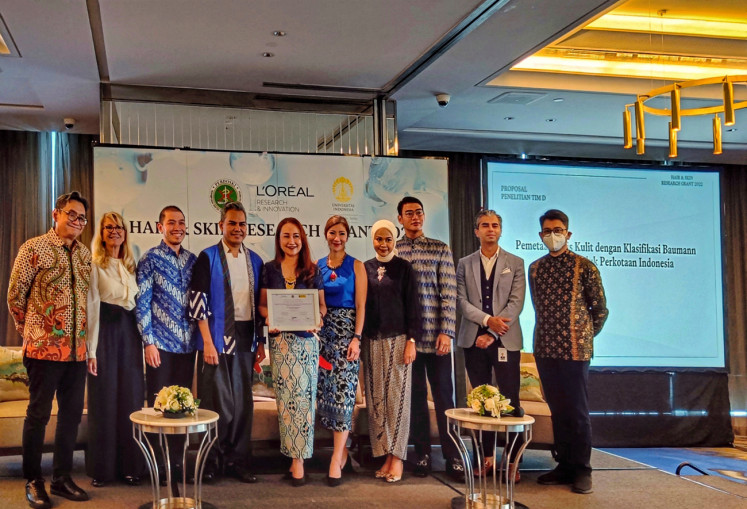
The connection between Vitamin D and AGA
Vitamin D is crucial for the health of our bones, teeth and muscles. New studies reveal that the vitamin can also help prevent hair loss.
“Many international studies have already proven the connection between Vitamin D levels and the severity of Androgenetic Alopecia,” Raissa, resident dermatovenereologist at RS Cipto Mangunkusumo, said. “But there isn’t any research [on this matter] yet in Indonesia.”
Raissa will survey the connection with 45 male patients in Jakarta aged 19 to 59 years old, with AGA severity from stage II (the least severe) to stage VII (the most severe), based on the Norwood-Hamilton classification.
These subjects will get a free consultation with the dermatologist and a free blood test to determine the Vitamin D levels in their body.
“If it’s proven [that men with the most severe degree of AGA have the lowest levels of vitamin D], dermatologists can recommend vitamin D supplements, in addition to medicines,” she said.
“With science, we can identify factors that aggravate AGA and help determine additional therapies to alleviate the condition,” Raissa stated.


